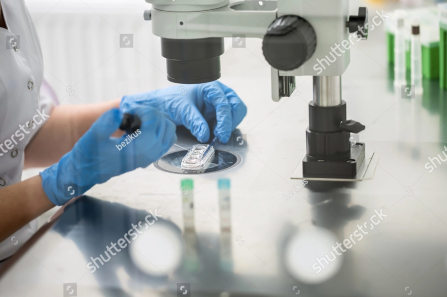We use cookies to make your experience better. To comply with the new e-Privacy directive, we need to ask for your consent to set the cookies. Learn more.
IVF & Fertility
About 12,500 babies a year are born in the UK to couples who are having trouble conceiving, thanks to in vitro fertilisation (IVF).
IVF was developed in the 1970s and the process remains very much the same to this day:
- The woman takes fertility drugs to help her produce more eggs
- The eggs are harvested and fertilised in the laboratory
- The woman is given hormone drugs to prepare her womb to receive the fertilised eggs
- The fertilised eggs are placed inside the womb and a normal pregnancy follows.
IVF techniques can differ from clinic to clinic, often depending on your personal circumstances. Below is a typical example of how treatment may be carried out.

How does IVF work?
Please note these IVF techniques can differ from clinic to clinic, often depending on your individual circumstances.
As a first step you may be given a drug to suppress your natural cycle.
This is done by administering drugs such as GnRH agonists, which are given either as a daily injection just under the skin (which is normally self-administered) or in the form of a nasal spray. These fertility drugs allow the body to produce a higher number of improved quality eggs during the treatment cycle.
This treatment continues for about two weeks.
GnRH agonists include: Buserelin, Leuprorelin, Nafarelin, Lupron (Prostap), Triptorelin, Decapeptyl and Synarel.
(Mid-cycle hormonal surges caused by a cancellation of a cycle can also be minimised by using these drugs.)
The hormone will increase the number of eggs you produce - meaning that more eggs can be fertilised. With more fertilised eggs, the clinic has a greater choice of embryos to use in your treatment.
They are taken as injections just beneath the skin that provide stimulation to the follicles that contain the eggs during the stimulation phase. Gonal F, Menopur, Merional and Fostimon are the most commonly used gonadotropins.
34–38 hours before your eggs are due to be collected, you have a hormone injection to help your eggs mature.
Your eggs are mixed with your partner’s or the donor’s sperm and cultured in the laboratory for 16–20 hours. They are then checked to see if any have fertilised.
Those that have been fertilised (embryos) are grown in the laboratory incubator for another 1 - 2 days before being checked again. The best one or two embryos will be chosen for transfer.
After egg collection, you are given hormone medication to help prepare the lining of the womb for embryo transfer.
This sex hormone is branded Cyclogest and can be given in the form of a pessary (a small block of medication that’s inserted into the vagina) or suppository (the medication in the form of a small cone or cylinder that’s either inserted into the vagina or the rectum). This is given in the dose of 400 mg twice daily rectally until embryo transfer, and rectally or vaginally after embryo transfer. The hormone progesterone can also be given in the form of a vaginal gel Crinone or capsules called Utrogestan.
It’s essential to prepare the endometrium (womb lining) for implantation of an embryo, to induce ovulation or to induce a period in a woman who hasn´t ovulated.
For women under the age of 40, one or two embryos can be transferred. If you are 40 or over, a maximum of three can be used.
The number of embryos is restricted because of the risks associated with multiple births. Remaining embryos may be frozen for future IVF attempts, if they are suitable.
If you have any questions regarding IVF treatments or fertility medication, please contact your clinic.
